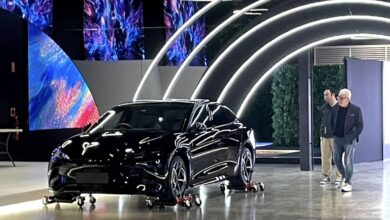Hyundai Aims To Capture the Emotion of Driving in Electric Vehicles

The smell of gasoline at the pump. The rumble you feel sitting on a bench seat when a V8 shoots a car ahead from the stop line. The less-than-perfect throttle response on uphills.
Times are changing and those senses are fleeting.
Electric vehicles (EVs), though quick, are the opposite of traditional sports cars. They lack the steering feel and visceral rumble of power.
Modern sporty EVs come loaded with technology and cushioning where most sports cars are barer bones than a traditional sedan or coupe, lacking many of the creature comforts the average driver has grown accustomed to. They’re are also heavy, sometimes thousands of pounds heavier than sports cars of similar sizes.
Companies like Tesla and Kia have been using equipment and algorithms to make their zippy EVs more engaging and track ready.
Porsche’s Taycan, when properly equipped is an all-electric track day beast. But, Taycan is also hundreds of thousands of dollars.
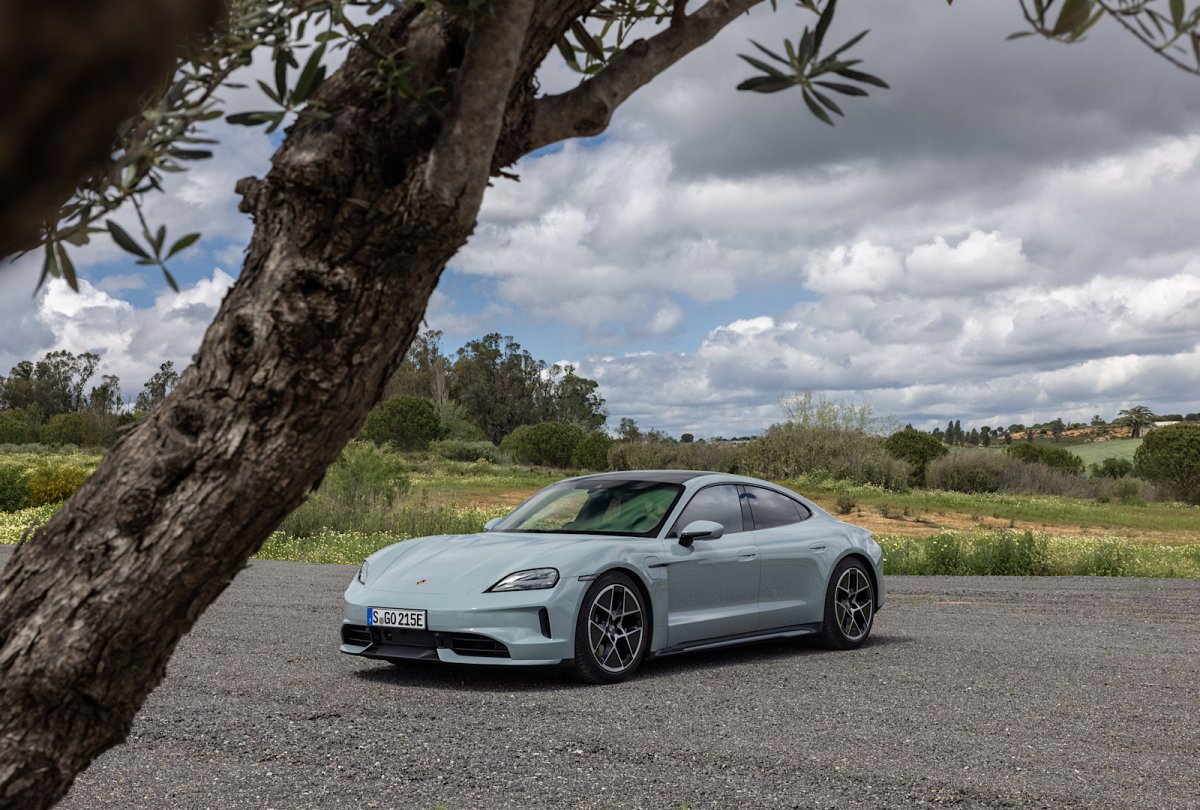
Porsche
Hyundai is attempting to find the sweet spot between sportiness, design, affordability and electric power, and believes that it has done so with the Ioniq 5 N, which was recently awarded 2024 World Performance Car of the Year award by the World Car Awards jury.
“Hyundai has been on a tear over the last few years, both in terms of the product execution and sales performance of its overall lineup, as well as the general excellence and innovation seen in its EV products,” Ed Kim, president and chief analyst at AutoPacific, told Newsweek.
“Hyundai has even made inroads into the high performance market with its N sub-brand, and N models quickly gained respect and accolades due to not only their raw performance numbers, but their impressive finesse that makes them more than the sum of their parts,” he said.
Ioniq 5 N is Hyundai’s first performance electric vehicle. It was designed and engineered to “elevate benchmarks for electrified performance, racetrack capability and driver engagement” the company says.
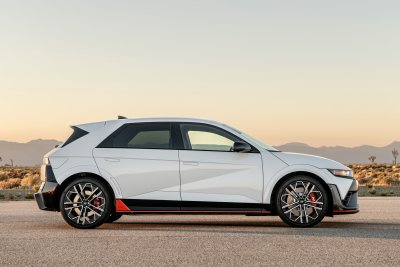
Hyundai Motor America
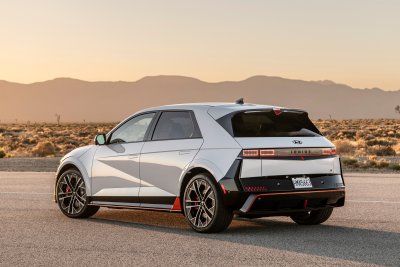
Hyundai Motor America
It rides on the same platform and uses the same charging technology as the traditional Ioniq 5, which makes it one of the fastest charging vehicles on the market today.
“The platform is most important. Of course, you see the exterior is something we can tell, but the platform technology to endure the high capability of the performance, I think that is the key,” Jae Hoon Chang, CEO of Hyundai, told Newsweek.
“If you compare with the I.C.E. [internal combustion engine] of a long time ago, performance is strong enough to have high-performance capability like a GTI,” he said, describing the powertrain and handling of the Ioniq 5 N.
The hatchback is meant to be equally at home on a race track as it is on suburban streets.
To get there, Hyundai had to change some of the most fundamental components of Ioniq 5. Motor and battery mounting locations were reinforced, the steering system’s rigidity was improved to provide more feedback to drivers.
The company also utilized digital technology to ensure maximum performance. N Pedal was developed as an intelligent software function to provide instant turn-in behavior and enhanced throttle sensitivity. The tech was honed in the real world proving ground of the automaker’s 120 N World Rally Championship cars.
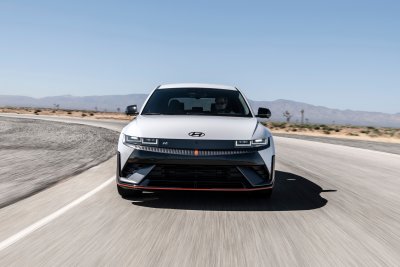
Hyundai Motor America
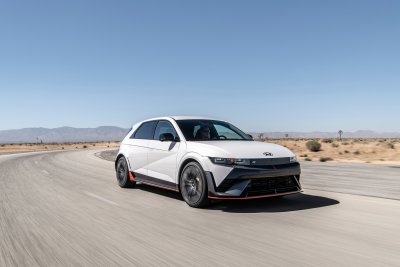
Hyundai Motor America
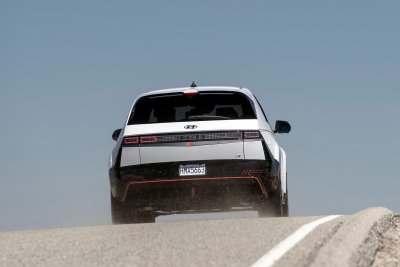
Hyundai Motor America
N Drift Optimizer balances vehicle controls allowing for a car to maintain its desired drift angle while Torque Kick Drift functionality allows drivers to simulate the clutch-kick action of a rear-wheel drive internal combustion engined vehicle.
Torque distribution can be adjusted to the driver’s choice of 11 levels (N Torque Distribution). Wheel sensors and larger dampers assist in delivering a truly sporty experience.
The car’s 58-kilowatt (kW) battery has been replaced by an 84-kW one. The standard Ioniq 5 gives drivers access to up to 320 horsepower. The Ioniq 5 N delivers up to 641.
That power can be boosted to its max for up to 10 seconds at a time using the N Grin Boost functionality. N Launch Control is also part of the mix.
Utilizing those functions, and running the vehicle quickly at high speed around a track, can shed miles from the model’s expected all-electric range in a hurry. Using Track SOC, which stands for “state of charge”, drivers can see their actual range calculated based on track driving rather than street use.
The entire engineering package is “something special”, Chang said, “…that gives a distinctive feeling for those who love high-performance speed.”
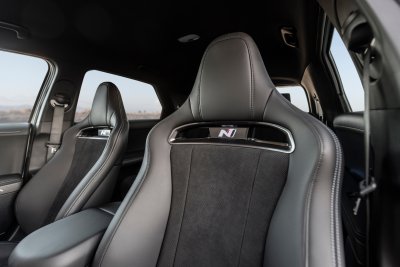
Hyundai Motor America
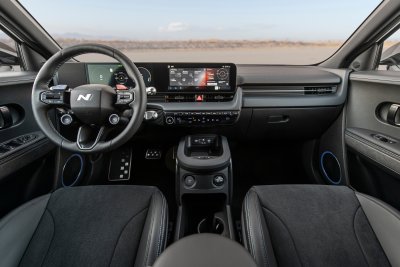
Hyundai Motor America
Ioniq 5 N has also gotten exterior design enhancements. This version fo the Ioniq 5 is lower, wider and longer than the traditional one. It wears unique front fascia, Luminous Orange-colored accents dot the exterior. A wing-type spoiler sits out back above a black bumper cover.
The Ioniq 5 N rides on 21-inch aluminum wheels wrapped in Pirelli P Zero tires.
Gasoline-powered race cars provide an ample soundtrack. EVs do not. Hyundai’s engineers have developed N Active Sound+ to deliver the simulated sound of shifting the vehicle, as if it has an eight-speed dual-clutch transmission.
The 10-speaker effort has three sound theme options: “Ignition” provides the sound of a four-cylinder internal combustion engine, “Evolution” is designed to match the g-forces of the drive and “Supersonic” was inspired by twin-engine fighter jets.
“It’s natural then that Hyundai’s overachieving work in both EVs and performance vehicles should combine at some point, and that’s exactly what the Ioniq 5 N has done. It’s also so much more than just a fast Ioniq 5; it aims and succeeds in bringing a level of driver involvement and enjoyment that hasn’t been seen before in an EV with features like N Grin Shift and a drift mode. Hyundai’s electric hot hatch helps advance the cause of performance EVs in general, as well as bringing even more spotlight on both the Hyundai and N brands,” Kim said.
The full package of equipment, technology and design come together for the reasonable starting price of $66,100, far below the cost of most new electric vehicles on the market today, let alone performance models.
“It may not sell in massive numbers – even though it is bargain priced relative to its performance – but it benefits Hyundai and its EV efforts in ways that go far beyond adding incremental sales volume,” said Kim.
Editor’s Note: The author of this article is a member of the World Car Awards jury.
Uncommon Knowledge
Newsweek is committed to challenging conventional wisdom and finding connections in the search for common ground.
Newsweek is committed to challenging conventional wisdom and finding connections in the search for common ground.



